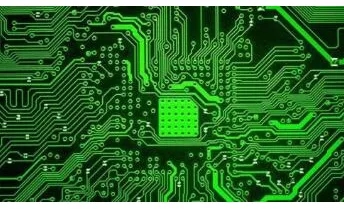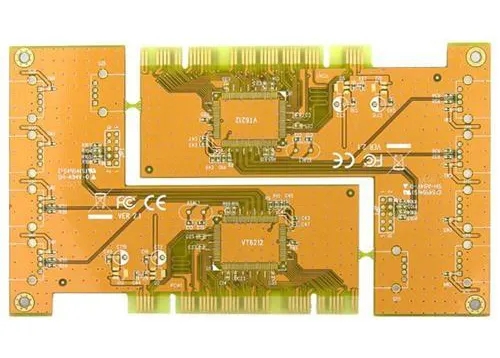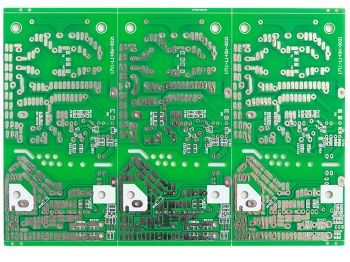
Locally increase the amount of solder paste or solder in the SMT process
How to locally increase the amount of solder paste or solder in the SMT process for PCB problems
Today's electronic industry is really more and more developed. As electronic parts become smaller and smaller, the products become thinner and thinner. Like the Heijingang big mobile phone at the beginning, today's micro mobile phone can be placed on the wrist. These are all thanks to the minimization of SMD electronic parts. Some people have tried the sizes of 0402, 0201, and even 01005, Even the pin pitch of common IC (integrated circuit) parts has been reduced to 0.5mm (fine pitch), even 0.3mm, which is a great challenge for the SMT process. But the bigger challenge is that these small parts and small solder joints are not the only ones on the circuit board. Instead, it is easy to have problems in the manufacturing process that large and small parts need to be printed on the same board at the same time.
How to make these small electronic parts welded to the circuit board in good condition, without the defects of empty soldering and short circuit, is enough for SMT engineers to worry. The bigger challenge is that not only these small parts on the circuit board need to be welded. Unfortunately, due to technical or cost constraints and considerations, some parts cannot be minimized (such as most connectors, batteries, coils, large capacitors, etc.), so there will be a problem that large and small electronic parts are crowded together on the circuit board.

Because large parts need more solder to be printed on the solder leg, so as to ensure the fastness of its solder; For small parts, it is necessary to control the amount of solder paste accurately and slightly, otherwise it is easy to cause solder short circuit or empty soldering. The control of solder paste amount (volume) is generally determined by the thickness and aperture of the steel plate. However, the thickness of the same steel plate is basically the same. The thickness of the steel plate suitable for small parts is not suitable for large parts. The rest can only control the opening of the steel plate, but the opening can not solve this problem. This seems to be a problem of fish and bear's paw.
At present, the common practice in the electronic industry is to make the steel plate meet the requirements for solder paste quantity of small parts first, and then use different construction methods to increase the solder paste quantity locally, because small tin quantity is more difficult to control than large tin quantity. Four common methods of increasing tin content locally are summarized here for your reference. In fact, most of these methods have been introduced in previous articles, but they are only slightly summarized here.
1. Manually point solder paste
Use a semi-automatic dispenser to add solder paste locally to the place where solder paste needs to be added after printing solder paste on steel plate or before reflow soldering. The advantage of this method is high mobility.
However, there are a lot of disadvantages of manually clicking solder paste:
We need to increase our manpower.
It doesn't matter if this person can share other people, such as visual inspection in front of the furnace or manual parts placement in front of the furnace. Basically, the manpower allocation should be calculated.
The quality is difficult to control.
The amount and position of solder paste manually clicked cannot be accurately controlled, which is more suitable for parts requiring large amount of solder paste.
It is easy to miss the work.
Adding solder paste manually may contact other printed solder paste places due to inactivity, causing damage to the shape of solder paste, thus causing short circuit or empty soldering. It may also move to other placed parts, causing part offset.
2. Import the automatic solder paste dispenser
In the SMT processing plant, the early SMT production line configuration is equipped with an automatic dispensing machine. The purpose of this dispensing machine is to spot the red glue under the SMD parts and stick the parts on the PCB, so as to prevent the parts from falling into the tin furnace during wave soldering. This dispenser can also be used to spot solder paste. As long as the solder paste is added to the syringe, the solder paste can be spot where it needs to be added locally to increase the amount of solder.
Disadvantages of automatic solder paste machine:
Since wave soldering is rarely used in the current manufacturing process, most SMT production lines are no longer equipped with dispensing machines, so this method may require adding another machine.
3. Use step down steel plate
The "stepped steel plate" is divided into two types: [STEP-UP (local thickening)] and [STEP-DOWN (local thinning)]. This special steel plate increases the amount of solder paste printing by locally increasing the thickness of the steel plate (step up), or reduces the amount of solder paste by locally reducing the thickness of the steel plate (step down). This STEP-UP steel plate can also overcome the problem that some parts are not flat enough (COPOLANARITY), and STEP-DOWN can effectively control the problem of FINE PICTH part pin short circuit.
Disadvantages of stepped steel plate:
The price of steel plate may be 10%~20% higher than that of normal steel plate.
Because thick steel plates must be used for special steel plates, and then the parts that need to be thinner are removed by laser, STEP-DOWN should be easier to make than STEP-UP, but almost no STEP-DOWN plates have been seen.
The increase of solder paste is limited.
The thickness of this kind of steel plate cannot be increased too much locally. Generally, 0.1mm steel plate can only be increased to 0.15mm at most, and most of them can only be increased to about 0.12mm. This is because there must be a slope buffer where the thickness of the steel plate is thicker than the normal thickness. If the thickness is too thick, the buffer zone must be lengthened, which will increase the amount of tin for nearby small parts.
4. Use pre forms
This "solder preforms" basically turns solder paste into a solid and presses it into small pieces. It can be designed into various styles and shapes to meet the actual needs, and it can also be used to make up for the insufficient amount of solder paste due to the limitations of steel plate printing. In addition, this "preformed tin" is generally packaged as tape and reel, just like small parts such as resistance and capacitor, SMT machine can be used to paste parts to save manpower and avoid mistakes in operation.
Disadvantages of preforms:
This "solder preforms" must be printed on the place where the solder paste is printed.
In this way, PCB can be prevented from moving when vibrating, and the solder paste can be fused with the original solder when melting.
Increased costs.
At present, the price of this "solder preforms" is not cheap, and it may be much more expensive than the small resistors without resistance value. In the future, with mass production, the price should be lower and lower.







